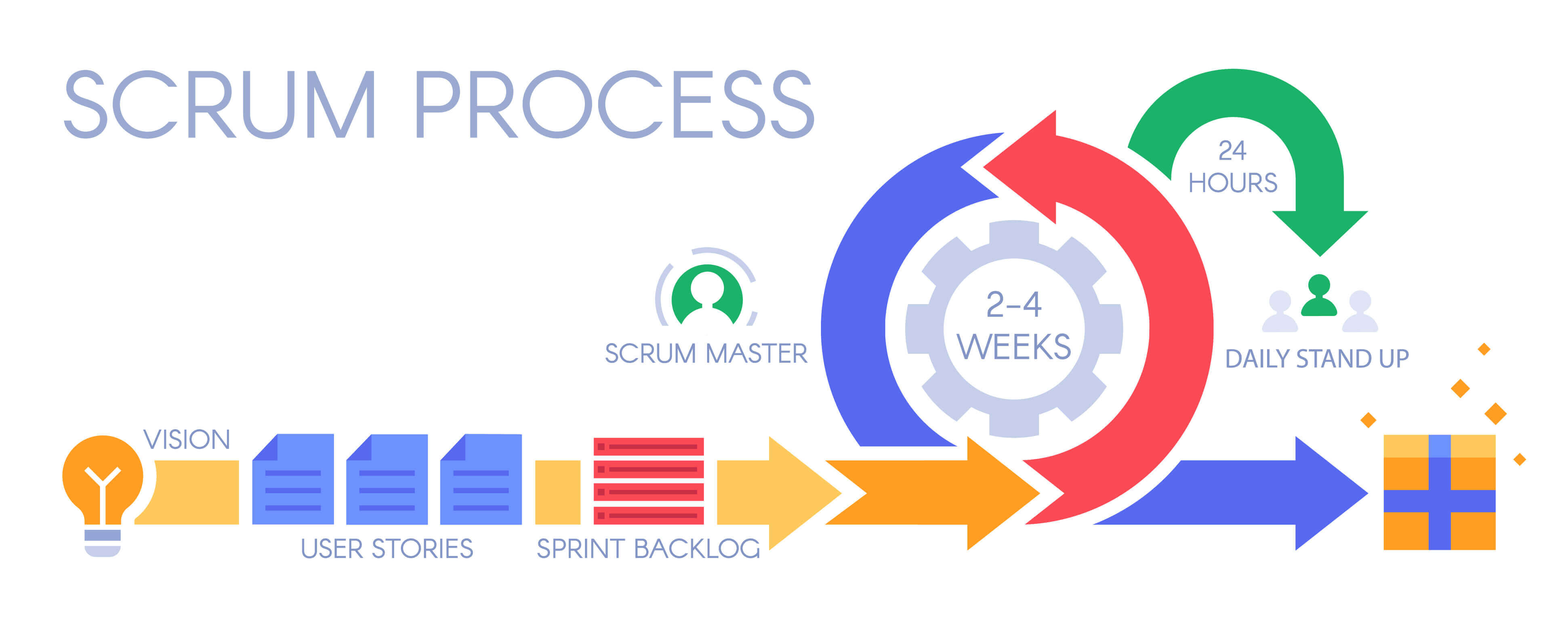Scrum project management is an agile framework for managing and delivering complex projects. It provides a flexible and iterative approach that enables teams to adapt to changing requirements and deliver value incrementally. Let's explore some key aspects of Scrum project management:
- Scrum Roles:
Scrum defines three essential roles: the Product Owner, the Scrum Master, and the Development Team. The Product Owner is responsible for prioritizing the product backlog, defining requirements, and ensuring that the team delivers value to the customer. The Scrum Master acts as a facilitator, guiding the team on Scrum principles, removing obstacles, and promoting effective collaboration. The Development Team is responsible for delivering the product increment, self-organizing, and making necessary decisions to achieve the project goals.
- Scrum Events:
Scrum introduces several events to structure and facilitate the project. These events include Sprint Planning, Daily Scrum, Sprint Review, and Sprint Retrospective. During Sprint Planning, the team defines the work to be done in the upcoming sprint. The Daily Scrum is a short daily meeting where team members synchronize their activities and discuss progress. The Sprint Review involves demonstrating the completed work to stakeholders and gathering feedback. The Sprint Retrospective allows the team to reflect on their process and identify areas for improvement.
- Sprints and Product Backlog:
Scrum organizes work into time-boxed iterations called sprints, typically lasting 2-4 weeks. The team selects a set of prioritized items from the product backlog to be completed within the sprint. The product backlog contains a prioritized list of requirements, features, and enhancements defined by the Product Owner. During each sprint, the team collaborates to deliver a potentially shippable product increment, ensuring that the most valuable items are completed first.
- Empirical Process Control:
Scrum embraces an empirical process control approach, which means that decisions are based on observation, experimentation, and feedback. The team inspects the progress and adapts the plan accordingly during each sprint. This iterative and incremental approach allows for flexibility and responsiveness to changes, reducing risks and improving the chances of project success.
- Transparency and Visibility:
Scrum emphasizes transparency and visibility throughout the project. The product backlog, sprint backlog, and project progress are made visible to the team and stakeholders. This transparency promotes open communication, shared understanding, and collaboration. It allows for early identification of issues and helps stakeholders make informed decisions based on real-time information.
- Continuous Improvement:
Scrum encourages a culture of continuous improvement. The Sprint Retrospective provides a dedicated time to reflect on the team's processes, identify strengths, weaknesses, and opportunities for improvement. By regularly inspecting and adapting their practices, the team can enhance productivity, quality, and overall project success.
Scrum project management provides a framework that enables teams to deliver value incrementally, adapt to changing requirements, and foster collaboration. By embracing Scrum principles and practices, project teams can enhance their ability to deliver high-quality products while maximizing customer satisfaction.

